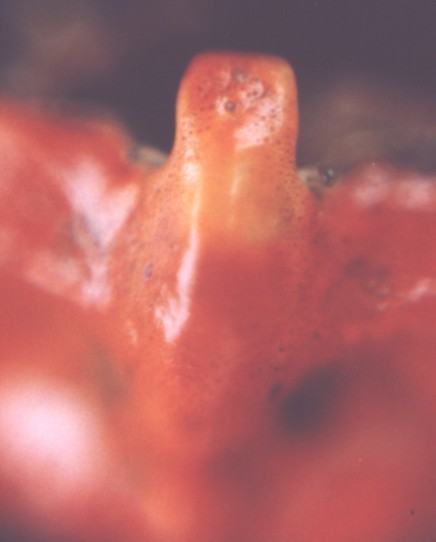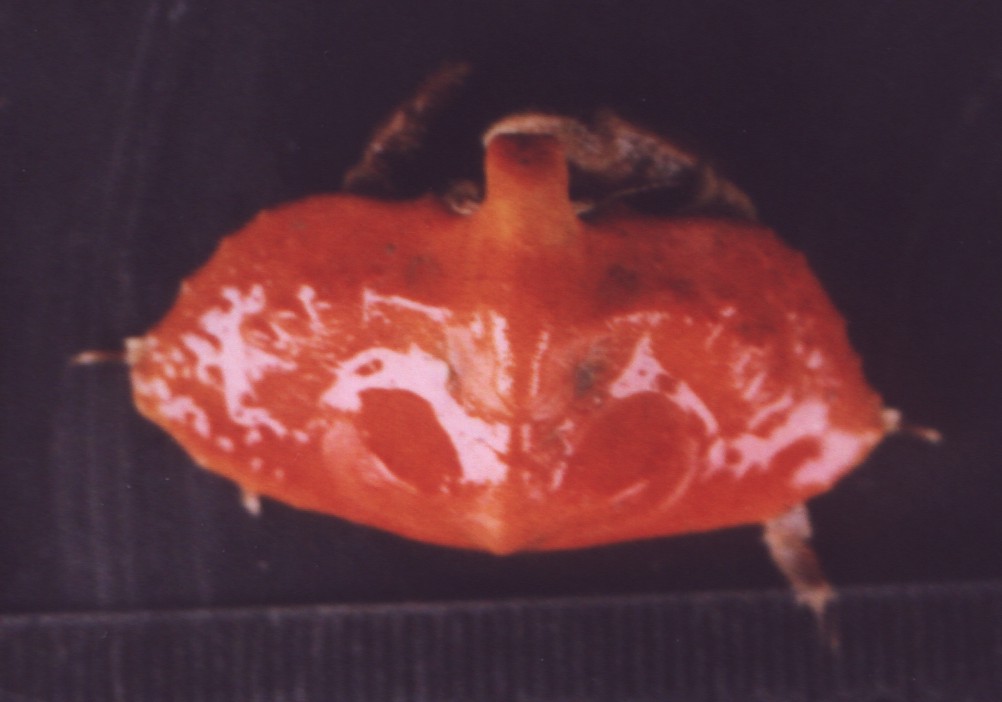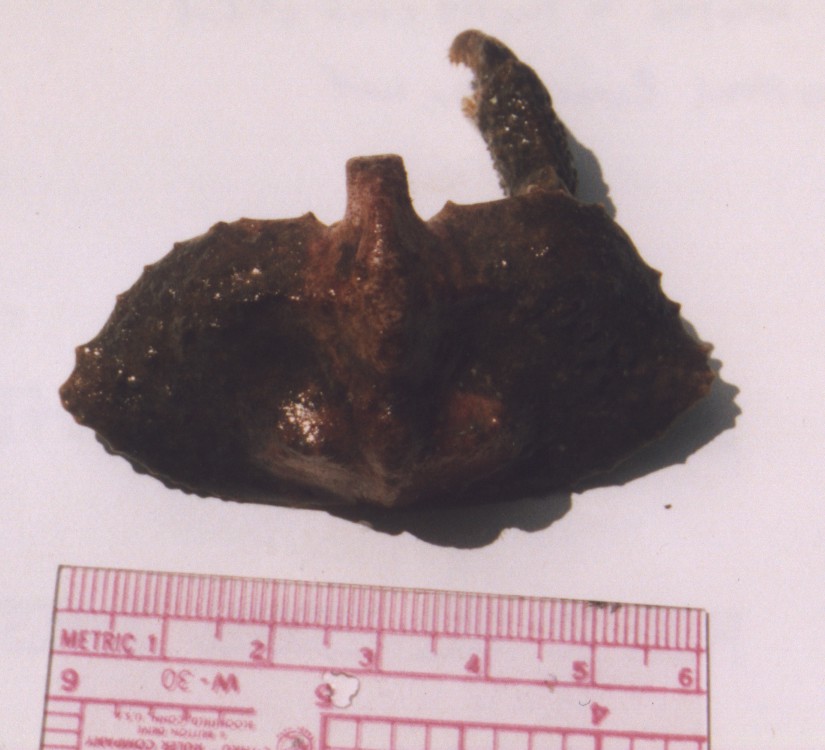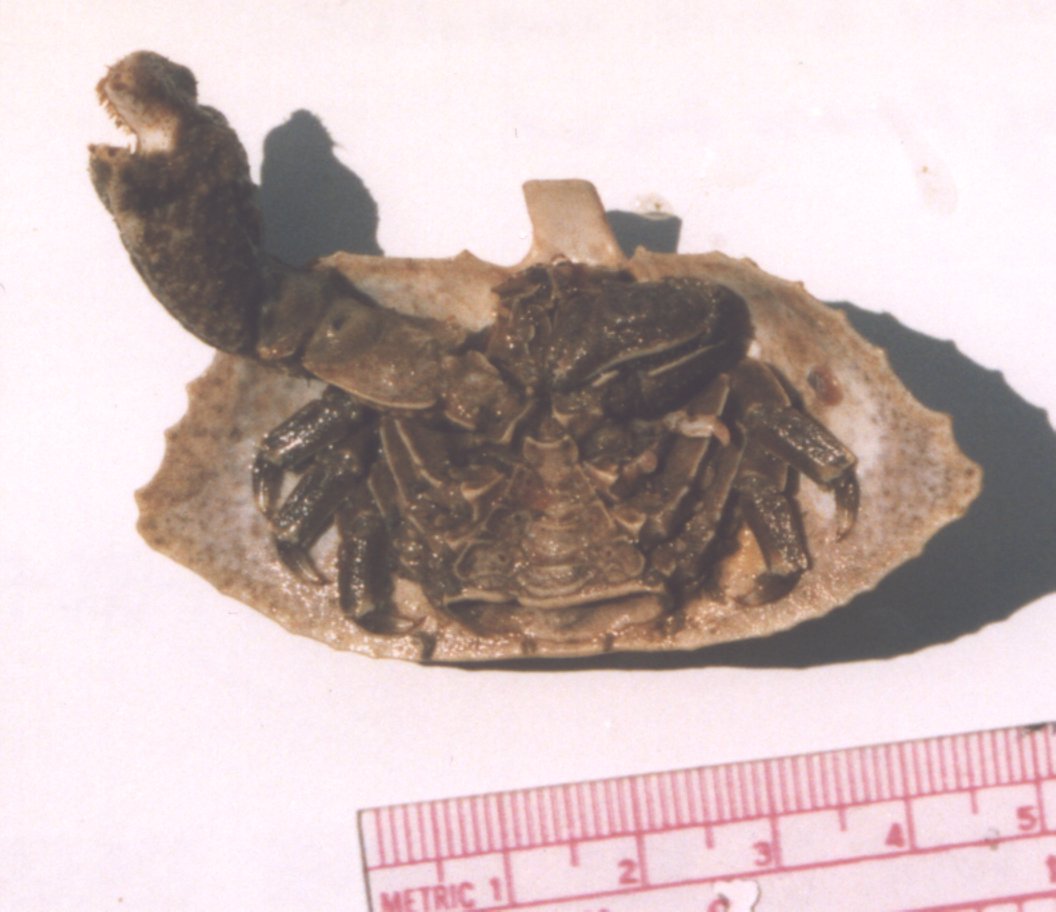Cryptolithodes typicus Brandt, 1849Common name(s): Butterfly crab |
|
| Synonyms: |  |
| Phylum Arthropoda
Subphylum Crustacea Class Malacostraca Subclass Eumalacostraca Superorder Eucarida Order Decapoda Suborder Pleocyemata Infraorder Anomura Superfamily Paguroidea Family Lithodidae |
|
| Cryptolithodes typicus from Sares Head (subtidal). | |
| (Photo by: Dave Cowles, July 1997) | |
How to Distinguish from Similar Species: Cryptolothodes sitchensis has a similar carapace but its rostrum is widest at the tip and its chelae are smooth.
Geographical Range: Amchitka Island, Alaska to Santa Rosa Island, CA. Less common in the southern parts of the range.
Depth Range: Low intertidal to 45 m
Habitat: Rocky banks, shell rubble near rocky cliffs. Open coast or inland waters, especially in high current areas.
Biology/Natural History: Feeds on bryozoans, coralline algae, and other attached species. Usually lives deeper than does C. sitchensis.
| Return to: | |||
| Main Page | Alphabetic Index | Systematic Index | Glossary |
References:
Dichotomous Keys:Coffin, 1952
Flora and Fairbanks, 1966
Hart, 1982
Kozloff 1987, 1996
Wicksten, 2009
General References:
Jensen,
1995
O'Clair
and O'Clair, 1998
Scientific
Articles:
General Notes and Observations: Locations, abundances, unusual behaviors:

This species has a rostrum widest at the base, which helps distinguish this species from Cryptolithodes sitchensis.
Note eyestalks projecting at the base of the rostrum. Photo by Dave Cowles, 2001

Here is the whole individual photographed above. Photo by
Dave
Cowles, July 2001

Cryptolithodes typicus can stretch its claws
out
from under
the carapace.
Photo by Dave Cowles, 1997

Underside of Cryptolithodes typicus. Note
ridges lining
the edges of abdominal
segments, and the roughness of the propodus
on the chela.
Photo by Dave Cowles, 1997
Note also that the chela
(claw) is quite blunt.
Authors and Editors of Page:
Dave Cowles (2005): Created original page